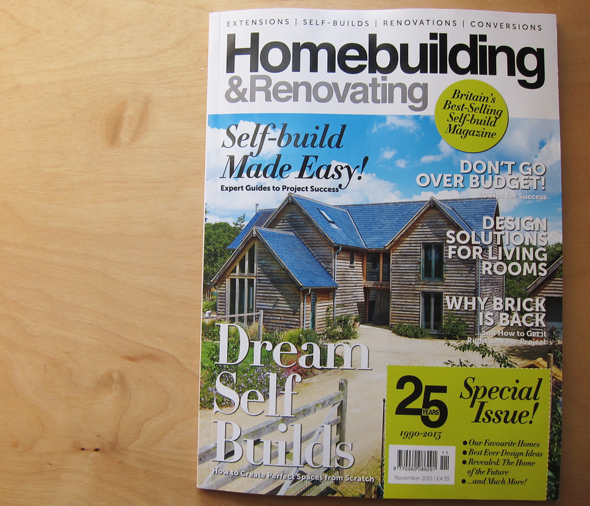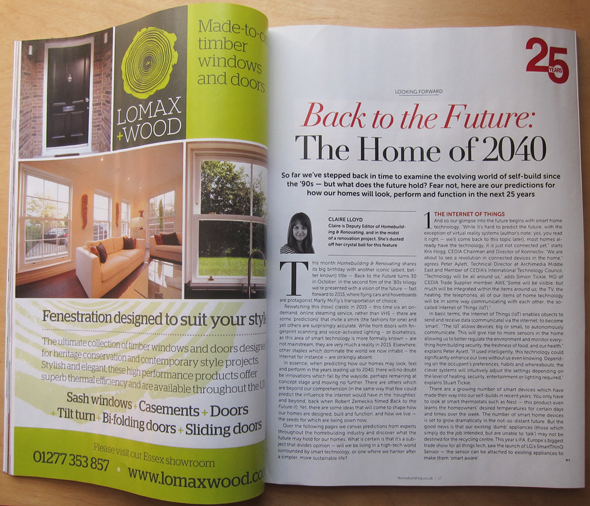My response to Homebuilding & Renovating’s question: “what will homes in 2040 be like?”
“The following are obviously hugely accurate and not at all biased towards where I’d like to see the industry moving!
Fabrication technology is improving and the increasing skills gap is well documented. This will push a growth in methods of construction that allow prefabrication; building systems will become more prevalent. This will reduce standardisation; allowing end users to have an input in the design of their home as the supply chain distance between buyer and manufacturer will shorten, along with the time taken to deliver the end product. Customisation, as with buying a new car, will become the norm.
As our natural resources continue to decline and consumer awareness of this issue grows, mass timber construction (CLT, Brettstapel etc) will also shift into the mainstream. Ideal for prefabrication, it will encourage increased forestry and the locking in of huge amounts of atmospheric carbon into the structure of our buildings. It will become a necessity that the construction of our homes actively reduces global carbon rather than adding to it.
The general trend of rising construction costs will continue making it more important that each building element does more than one thing. We will see the mass timber structures also being exposed as internal surfaces leading us away from fragile plastered interiors and towards warm, robust timber finishes.
It’s almost certain that Passivhaus levels of performance will become the new regulatory norm and there will no longer be a question as to whether our homes perform adequately or not. This will not only mean that they are warmer and cheaper to heat, but that they’re also naturally lit and well ventilated with excellent air quality.
We will transition through a period of smart homes before we realise that additional technology only complicates things and doesn’t improve the way we live. Fabric first approaches will dominate, delivering comfort and performance through passive systems that don’t require a smart phone or a good wifi signal to work.
In short, my 25 year prediction is for a growth in simple, customisable, prefabricated timber homes that deliver warm, robust spaces with exceptional comfort, low running costs and the elimination of the damp and cold defects that plague many of our new builds today (fingers crossed).”


